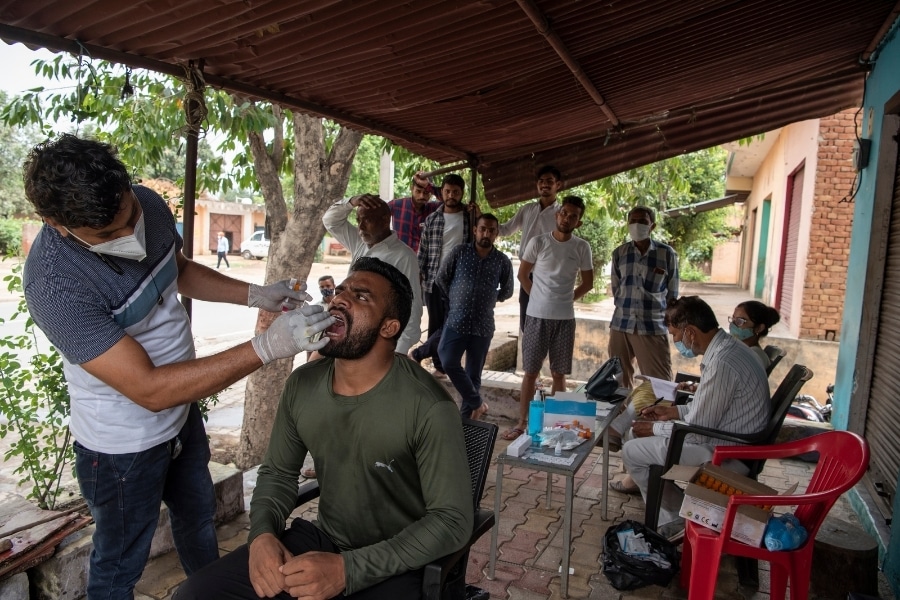
Covid-19 strategy divides India's villages, vaccine hesitancy unites them
The combination of an uneven virus response — a reflection of huge inequality in resources and the vagaries of local attitudes — and a struggling vaccination campaign has left officials warning of a third wave of infections when the second has at best only leveled off
 A Covid-19 testing site in Salarpur, India, June 12, 2021. Just 5 percent of India’s 1.4 billion people are fully vaccinated, while about 20 percent have had a first dose. That gives the country insufficient protection against the highly contagious Delta variant of the virus, which first surfaced in India. (Saumya Khandelwal/The New York Times)
A Covid-19 testing site in Salarpur, India, June 12, 2021. Just 5 percent of India’s 1.4 billion people are fully vaccinated, while about 20 percent have had a first dose. That gives the country insufficient protection against the highly contagious Delta variant of the virus, which first surfaced in India. (Saumya Khandelwal/The New York Times)
GARH MUKTESHWAR, India — When a devastating second wave of Covid-19 infections reached India’s countryside this spring, the village of Khilwai took immediate action. Two testing centers were set up, and 30 positive cases were isolated. The outbreak was contained with just three deaths.
It was a different story in the two villages on either side of Khilwai. Testing remained limited. The local health center in one village had been closed, its staff sent away to a larger hospital. The coronavirus spread, and at least 30 people in each village died with Covid-19 symptoms.
But even as the three villages in India’s most populous state, Uttar Pradesh, diverged in their handling of the coronavirus, they have been united in another way: a vaccine hesitancy that is prevalent throughout India and threatens to prolong the country’s crisis.
The combination of an uneven virus response — a reflection of huge inequality in resources and the vagaries of local attitudes — and a struggling vaccination campaign has left officials warning of a third wave of infections when the second has at best only leveled off. Any sense of rapid relief like the one now prevailing in the United States is unlikely anytime soon.
Just 5 percent of India’s 1.4 billion people are fully vaccinated, while about 20 percent have had a first dose. That gives the country insufficient protection against the highly contagious delta variant of the virus, which first surfaced in India.
©2019 New York Times News Service






